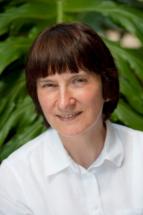
La conférence sera livrée en anglais seulement.
Entrée libre
Bienvenue à tous!
Professor Ewa Goldys
Macquarie University, Sydney 2109 NSW Australia
Fluorescence bioimaging and sensing
Fluorescence has become one of the key detection methods in genomics, proteomics, cell biology and biomedical diagnostics. Bright and stable fluorescent nanoparticles are desired for these and a range of other biological applications. Fluorescence detection required bright bioprobes that have high absorption coefficients and high quantum yields, are stable (free from bleaching and/or blinking) and clearly distinguishable, with high signal to noise ratio. Long fluorescence lifetimes are desirable for ultrasensitive detection, since such bioprobes can be used in a time-gating mode that offers exceptionally high background rejection. However long lifetimes lead to low fluorescence intensity, by a factor of 106 for probes with millisecond lifetimes compared with traditional fluorescent dyes.
I will discuss our work to develop such fluorescent bioprobes (a) increasing the density of emitters (upconverting nanoparticles and nanoruby) (b) amplification of fluorescence by using plasmonics( europium chelate-doped silica, upconverting nanoparticles). The mechanisms responsible for these effects including upconversion quenching, plasmonic enhancement and surface effects will be discussed. I will also discuss selected applications of these nanoparticles including background-free imaging and single nanoparticle fibre sensing.
I will also discuss the program of our recently established ARC Centre of Excellence in Nanoscale BioPhotonics (CNBP) . Its work centres on new methods of molecular sensing in the living organisms. This interdisciplinary program will enable targeted measurements of biological, chemical and physical processes to be performed within these complex and dynamic environments.
Professor Ewa M. Goldys is Deputy Director of the recently established Australian Research Council Centre of Excellence in Nanoscale Biophotonics (http://cnbp.org,au/) and she holds a Personal Chair in the Department of Physics, Macquarie University, Sydney, Australia.
She is also Director of an interdisciplinary Research Centre “MQ BioFocus” at Macquarie University bringing together over 40 academics and over 100 early career researchers and students.
Her research spans the interface of materials science, photonics and biotechnology where she is drawing on her earlier achievements ultrasensitive optical characterisation. A portfolio of her works centred on the development and understanding of luminescence emission in doped nanocrystals where she developed advanced methods of synthesis and characterisation of fluorescent nanoparticles for applications in fluorescence labelling. Her expertise in ultrasensitive optical characterisation and nanotechnology led to the development of novel approaches to biochemical and medical sensing and diagnostics. Current projects focus on label-free non-invasive high content cellular imaging and characterisation of cell subpopulations and on nanoparticle chemical sensors.

